"Girls playing in the garden and posing for the camera. One young girl plays with a toy steam train as a dog wanders about." (NWFA Online Database)
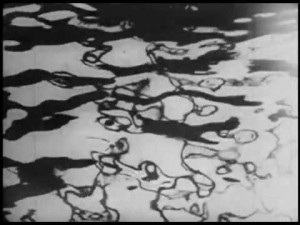
"This film is a study of water in the new manner: A series of photographic shots of the reflections of boats, ferry houses, docks, etc., on water and the whole resulting in a chain of pure abstract patterns of shapes in water. Steiner achieves an astonishing tempo as his film advances. The picture is bound to attract wide attention and a great deal of discussion wherever is shown." Photoplay, Nov. 1929, 67
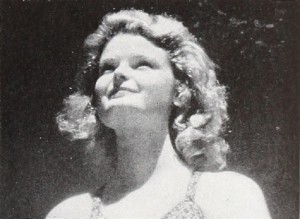
"To the production of Hail, British Columbia!, Leo J. Heffernan brought the filming talent and the fertile imagination that have marked his previous pictures. But, in this film, he has surpassed himself. He has produced a travelog, a scenic film or a record of British Columbia that covers all the diverse high lights of that province, but which still has unity. He has made a movie that is technically superior to the best theatrical travelogs, and certainly more entertaining. Mr. Heffernan has two great gifts — the capacity to improvise sequences during his travels and the ability to invent amusing and apparently natural episodes that fit the theme of his picture. This latter gift is a dual one, for it includes the ability to direct actors — people whom Mr. Heffernan meets here and there and persuades to "take a part" in his movie. The continuity of Hail, British Columbia! is ingenious and suavely followed. A girl gets off a Canadian train at a way station, where she finds a "Mountie." To him, she puts the problem, "What should I see in British Columbia?" The Mountie is somewhat taken aback, but he gradually recalls things to tell a tourist, and the picture unfolds his story. Heffernan like, there is a surprise twist at the end, which we shall not spoil by telling. Discussion of Hail, British Columbia! would be incomplete without at least a mention of the magnificent logging sequence, the clever camera work in presenting a story of a bicycle ride, the beautiful scenic shots and Canada's blondes! This picture has everything!" Movie Makers, Dec. 1941, 541.
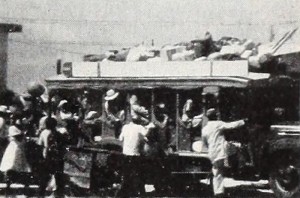
"Stanley Woolf's film tour of this fascinating island presents an entertaining record, in a pleasantly casual manner, of an American visitor's impressions of the Black Republic. The street scenes and detailed studies of its artisans at work provide engrossing fare, while the voodoo dances at the climax make an exciting film experience. Technically, Haiti — The Black Republic is a wise and workmanlike production. From the short period and superficial observations of a tourist's visit, one cannot, regrettably, ask for a great deal more. The haunting subject matter, however, prompts a fuller answer to such a demand — someday." Movie Makers, Dec. 1950, 467.
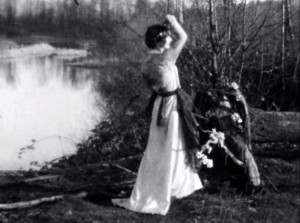
"A parody of William Shakespeare's "Hamlet," produced and directed by James Blue while he was an undergraduate student at the University of Oregon." Knight Library.
"This is a superb film about the Strategic Air Command and shows us how the SAC is constantly ready to strike and destroy an aggressor anywhere in the world. The purpose of the film, to quote directly from the sound track: "Is to show you the power of the hand (that controls the nuclear bomb release in modern jet bomber) and how it protects those who desire peace and freedom." Specifically, this is the story of the six men who man a B-52 all-jet bomber nicknamed "Ready 11", and how it would carry out an order to strike and obliterate an enemy target anywhere in the world. The B-52 can launch supersonic missiles that are accurate and deadly, and the launching scenes and those showing the missile following its course until it hits its target are as outstanding as any in the film. Most of the photography was taken around Mather Air Force Base near Sacramento, Calif. Dr. Franklin states he spent four years making the film, and it required two years of letter writing to get permission to ride in military plans as civilian to get the footage he wanted. He had to pass a physical examination, become familiar with oxygen equipment, and learn ejection procedures. Classified material presented a problem, also, and it required an additional year and a half to obtain Air Force approval of the footage used in the final film" PSA Journal, Sept. 1964, 50.
"This tragedy begins with teary goodbyes as two lovers part – Joe is off to America to seek his fortune. In a letter to Beth, Joe says he’ll write again when he's ready for her to come and be his bride. She replies that unless she hears from him soon she will end it all. No reply arrives so Beth drowns herself in a river. Back in America, Joe receives his lover's final letter, which causes him to jump off a suspension bridge. If only they’d known about the incompetence of the Post Office" (BFI Player Online).
"an original story adapted from a newspaper report of a double tragedy caused by a lost letter" (HMHT 1933: 154).
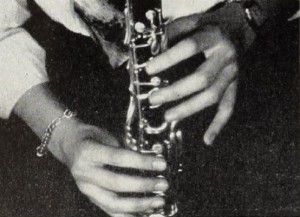
"Almost since the beginning of amateur movies, the dawn-to-dusk continuity has been a perennial favorite in personal movie making. In Hands Around the Clock, William Messner presents a suave and refreshing variation on this well-worn theme. For in his version, as the title suggests, only a pair of hands (apparently belonging to a talented teen-aged youth) portray the morning-to-midnight activities being pictured. Outstanding in Mr. Messner's production is the implicit evidence of exact and imaginative planning. Scene flows into scene, and sequence into sequence, with an effortless ease which finds every transition in exactly the right place. Mr. Messner's musical score is pleasantly suitable, excellently recorded and accurately synchronized. The producer of Maxine's Big Moment, a 1948 Ten Best, has taken a big step forward in creative filming." Movie Makers, Dec. 1950, 464.
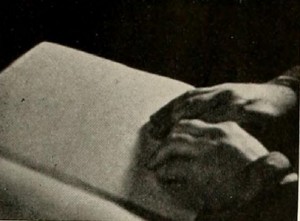
"It is a striking gesture to employ the one medium which depends upon the sense of sight to aid the cause of the blind. This is what Jack L. Krapp has done in his comprehensive movie, Hands that Work in the Darkness, a thoroughgoing presentation of the unusual work being done for the sightless by the Cleveland Society for the Blind. The film is of generous length, yet, because of Mr. Krapp's special skill in maintaining interest through choice of viewpoint and because of the absorbing subject matter, it holds the attention throughout. Appropriate musical background, together with the delivery of a well composed spoken narrative, further enhances the presentation of the subject. Mr. Krapp's interior lighting work is very well done, and he seems to be able to take large or small interiors in his stride. A notable section of the film includes the recording of a play, performed by blind actors on a full sized stage. This is an excellent record film and a splendid achievement in its field." Movie Makers, Dec. 1940, 602.
Total Pages: 299